To paraphrase the most famous introduction to a book ever: Successful Facebook campaigns are all alike. Each unsuccessful Facebook campaign is unsuccessful in its own way.
The latter can be seen as too intrusive or too boring. Too broadly targeted or with a very niche audience. Irrelevant or general. There are many things that can go wrong with them.
But a successful Facebook campaign, the best one, the one that all affiliates pray to create, run by gods, advertised by angels – that one is easy to spot.
It just fits. It draws attention, it stops you from scrolling. And fills you with hope and desire. It makes that little part of your brain that is dedicated to idle internet activity to click before any rational part kicks in.
You don’t need to pray for such a campaign. We will help you create one. Unlike many ‘ultimate guides to Facebook’, we are not simply describing the options you have at your disposal. We say what setting you should select and why. We describe things that are less visible or not mentioned in tooltips or Facebook knowledge base articles. Finally, we focus on what is needed for affiliate marketers, so all cases where an advertiser wants to promote their own little bookstore will be omitted.
You have affiliate offers to run, and with them, a set of specific needs and restrictions.
Lastly, we propose how you can use Voluum to extend the scope of functionalities offered by Facebook Ads Manager.
Facebook Ads (now Meta Ads) for Affiliate Campaigns
I’m not going to convince you that Facebook is a good place to run your offers. Regardless of what you may think of the platform itself, their constantly-changing policies, evolving algorithms, and a moody compliance team, over 2 billion users cannot be ignored. All the things that I have mentioned should be dealt with, they shouldn’t be a reason for resigning from tapping into an advertising potential of the world’s biggest social platform.
- There are restrictions, and you should follow them.
- There are algorithms that make seemingly incomprehensible decisions, but you should understand how they operate.
- There is a compliance team whose primary job is not your wellbeing, but safeguarding Facebook’s interests.
It is not easy, but it is not hard either. With this guide, and with Voluum, it will be a little bit easier. So let’s start and see what Facebook can throw at us.
1. Idea
Before you run any Facebook Ads/Meta Ads campaign, it is essential for you to understand the gist of Facebook Advertising. And it is as follows:
Facebook cares much more about its user’s experience rather than about your business.
If it feels that your ads compromise the warm cocoon of self-affirmation that its users are in, it will block you in the blink of an eye. Nothing personal, just business. Their business.
Do not break that cocoon, but cash on it. Facebook users do not log in to this platform for ads. They come to fulfill certain needs. If your ads promise to fulfill that need and if they do that in a nice way, your ads will no longer be ads. They will become content.
2. Facebook and Voluum
Although Facebook lives because of paying advertisers (“Senator, we run ads”), it hasn’t been built for a person like you. An affiliate marketer.
The perfect advertiser from Facebook’s perspective is someone advertising their own small business, in the best scenario selling eco-friendly, handmade and sustainable products. So their perfect advertiser is an offer owner.
This philosophy poses several restrictions on your work that concentrates on promoting other people’s offers. Chief among them is conversion tracking.
Conversion Tracking
Conversions are the most important information for you. They are your success metric. The way Facebook Ads (now Meta Ads) tracks conversion is by generating a special piece of code, called Facebook Pixel. This piece of code is implemented on a page where conversion happens or on a page after that one. When a defined event occurs (such as purchase, page load, or others), this code makes a request to Facebook with information “Hey, you got a conversion. Awesome!”.
You probably already see the problem. In affiliate marketing, you do not control offer pages, so you cannot implement any piece of code. Affiliate networks usually use another method of conversion tracking, which is called server-to-server (S2S) postback URL. This method is incompatible with Facebook. This is why you absolutely NEED Voluum, which can manage conversion tracking and Facebook with ease.
Voluum Contribution
In order to have all the relevant statistics in one place, you should put a tracker between a Facebook ad and your offer. An affiliate tracker such as Voluum will then collect not only information about how many people have clicked your ad but also how many of them have converted by taking your affiliate offer. You will get a metric that normally would not be available for you on Facebook: conversion rate. This little bastard is more important than click-through rate (what good is high click-through rate with low conversion rate) or the sheer number of visits.
If your affiliate network uses the S2S postback URL method, you will still be able to pass conversion information from Voluum to Facebook, but you will lose a lot of details in the process. It is better to use Voluum, which can help you with so much more than just conversion tracking. Whenever throughout this guide there will be an option for Voluum to make running Facebook’s campaign easier and more efficient, it will be mentioned in another ‘Voluum Contribution’ section.
3. Account warmup
You’ve probably been on Facebook for many years now. You shared many posts, liked many things. For Facebook, your personal account shows signs of natural human behavior. If you create a new account from scratch, you are a tabula rasa (blank slate) for it. It is good to fill that slate with normal human use.
A small digression: generally speaking, we cannot definitely say what Facebook likes and what factors its algorithms take into account to assess your ads and you, as an advertiser. It’s not written anywhere, and definitely not carved in stone. However, we have some indications that will probably help you in the long run.
One of the factors that seem to be important to Facebook is account scoring. If it shows the aforementioned signs of natural behavior, it is treated differently than a completely new account. The different treatment includes:
- Higher immunity to red flags and spam reports from a community
- Lower costs for traffic
Many affiliates say that they skip this step. But if you are playing the long game, this may help you to look more credible in Facebook’s eyes. So do as humans do: share things, get comments and likes, write stuff.
Once you start using your account for advertising purposes, remember, that the scoring process never ends. The algorithm will assess users’ activity involving your ads, a domain that you use (.com domains are rated higher than cheap .xyz ones), compliance, and your engagement with Facebook support.
Everything that has been described up to this point concludes the preparation phase of running an affiliate Facebook campaign.
4. Targeting
Now we can finally move to create your first campaign. We discuss all the things that you would expect from the process: targeting, audiences, creatives, but from an ‘affiliate’ angle. Note that some of the options available will differ because of the selected campaign goal, a country you operate from, and new things that Facebook keeps on testing. Never forget that you work in a dynamic environment.
Campaign structure
Let’s stop for a brief moment to talk about the way Facebook Ads (now Meta Ads) structures its campaigns. The structure looks as follows:
Campaign -> ad set -> ads
Each level has different purposes and different options attached to it. You need to know that in order to structure your campaign properly:
- Campaign: This is the highest level of the structure that is used to define a campaign goal.
- Ad set: This is the middle level where you define your targeting, budget, and placement options. Most of Facebook’s optimization magic works on the ad set level.
- Ad: This level contains ads themselves, with a creative and a destination link. You can create up to six ads in one ad set.
The structure of your campaign affects how the Facebook algorithm approaches your campaign.
A. Campaign level
In the first step, you will have to decide about a campaign goal. If you would run a typical product campaign, you would have to consider running an awareness campaign first before moving to the next phase: consideration and then conversion. With affiliate campaigns, you are most likely interested in getting conversions. Select this goal to let Facebook algorithms know how to optimize your campaign.
B. Ad set level
The ad set level is all about targeting and budget options. Let’s talk about defining your audience some more.
Audiences
The scope of options that are available for a FacebookAds/Meta Ads campaign goes beyond what you are probably used to seeing in a typical traffic source platform. There are the standard demographic options where you define the age and gender of your audience, but also there are additional options based on their interests and behaviors.
Select interests that are related directly or indirectly to your offer. Do not put too many interests in one ad set, as it will skew the results. You will have no way of telling which interest drove the most traffic.
Think not only who your visitors are, but also how they behave. Maybe they commute regularly? Maybe they use a mobile device for more than 5 years? Or they have clicked the ‘Shop now’ button in the past week? Which behavior type you think fits your audience best?
If you have run affiliate campaigns on Facebook Ads (Meta Ads) before, you have some additional options to consider:
- Custom audience: Create one to target people that have previously converted. Use your own data sources (such as your website or customer list) or Facebook’s ones (such as a Facebook page or Instagram profile). People that have converted are not to be forgotten: they have already proved that they like what you have to offer. They may like other offers as well.
- Lookalike audience: This creates an audience similar to the one that you have created before. If you had a successful campaign, try to use this option to target similar people.
Whichever options you set, we advise you not to exaggerate. The more precisely you target, the smaller the audience you have. Overdoing the targeting options may cause that your audience will be too small to bring any significant results. On top of that, the more detailed targeting options you use, the more you pay for your traffic. Make sure that your audience is at least 100k people.
Budget
Set your budget options in a way that will, if not guarantee getting conversions, then at least make it probable. If you won’t get any conversions, you won’t be able to tell anything about the potential of your Facebook Ads (Meta Ads) campaign.
Your bid will compete in a millisecond-long auction that determines who will show an ad. But auctions aren’t necessarily won by the highest bidders. Facebook takes a lot into consideration: your account score, ad relevance, users’ engagement and so on. This is yet another reminder that a long-term commitment to Facebook advertising is better than a quick in-and-out action.
Voluum Contribution
Passing cost information outside is not supported by Facebook Ads (now Meta Ads). However, Voluum can go around it. It has a traffic source integration feature that allows it to fetch cost information even without official Facebook support. With cost information included in Voluum, you will have all the pieces of the financial puzzle in one place.
Pools
The crucial thing to know is that Facebook Ads (now Meta Ads) will use additional criteria to assign specific people to ad sets. These criteria create what is known as a ‘pool’ of people. A pool is a subcategory of your whole audience. There is no way to know what is driving Facebook to select some people to this pool over the others.
Since you don’t know these criteria, it is a good idea to duplicate your ad set once it is created. Facebook will try to use other criteria to create a different pool for your duplicated ad set. This way you will be able to test different pools attached. We will expand on it later on.
No banner with provided ID found
C. Ad level
The lowest level of the campaign structure revolves around creatives, content, and destination links.
The usually-overlooked option that you can use here is to use your existing post as a basis of your ad instead of creating a new ad. This will attach all likes and shares of this post to your ad.
Whether you create a new post or use an existing one, the remaining settings will be the same.
Setup Creatives
People try their best to avoid most of the ads on the Internet. Be that those annoying pop-ups that require making a deliberate effort to click them off to oblivion or native ads that have to be purposefully avoided when reading an article, people will make an effort not to see ads.
It’s different on Facebook Ads (now Meta Ads). A user is already scrolling through their feed. Probably bored half to death. When they see an ad, no extra effort is necessary to avoid it. Inertia causes them to simply keep scrolling further.
This puts pressure on your creatives. They have to be eye-catching enough to create an intent to stay and look at them for a few seconds, and on the other hand, not too catchy, so they don’t violate Facebook/Meta Ads’ guidelines. You can put the following tips into motion:
- Use images that create a sense of depth with a perspective.
- Dust off all the tips & tricks that you’ve heard about the art of photography. Learn how to use framing and perspective to direct people’s focus to the CTA button or to a text.
- Use images of people’s faces, especially the ones that look directly into the camera. It’s an age-old reflex that forces people to look back.
- Use motion blur or diagonal lines to suggest motion in the selected image.
- People are blind to stock images, no matter how beautiful. A smiling woman eating a salad will hardly engage anyone.
- Avoid showing too much text on a creative, Facebook doesn’t like that.
- When using a video, include captions to allow users to understand what is going on without the sound.
- Headlines that include a call to action work better over the ones that don’t.
- Remember that you are trying to create something that looks more like regular content, not an ad. So include images with people using your product rather than the product itself. This way you will sell an experience instead of just an item.
- Be creative with your approach. For example, you can use the carousel format to show smaller images that make one big image.
These simple tips will help you stand out from the crowd. Stop the scroll. Generate a spark of interest. And get that click.
Ad destination
The website URL you submit under the ad should guide a visitor along a funnel. Don’t link directly to an offer page, create a lander and put it in-between. Facebook Ads (now Meta Ads) will check your landing page in terms of ad relevance. This means that your ad and your landing page have to be consistent In terms of WHAT they say and HOW they say this.
Even if you do not want to create an elaborate and meticulously-designed landing page, you should put a pretext landing page with a quiz from a template that asks general questions about a product. Anything that Facebook’s algorithm and compliance team can inspect safely.
Voluum Contribution
Facebook Ads/Meta Ads likes to know exactly where users will be directed to. So any redirect-in-the-middle becomes immediately suspicious. That is why we recommend using a direct tracking option that is available in Voluum. There are no redirects, re-routes and other tricks that may anger the social giant. There is only one script that you put on your landing page that can inform Voluum about a click on your ad. You put a direct tracking URL as your website URL and Voluum takes care of the rest.
4. Split testing
Even the best ad idea may not work. What looks awesome to you may not seem so awesome to your audience. You can never know for sure what drives people to click. If you could, you wouldn’t be reading this guide. Instead, you’d be enjoying a life of a billionaire somewhere where billionaires live.
So for all the non-magicians, non-clairvoyant common people, split-testing has been invented. It works on two levels: an ad set level and ad level. The goals are different for each level, so let’s dive into this topic.
Split-testing ads
If you have worked for just a little bit as an affiliate marketer you should know that testing various creatives is one of the keys to success. In Facebook Ads (now Meta Ads), one creative is connected with one ad, so in order to test the effectiveness of a creative, you should create several ads with different creatives and text.
Facebook allows you to create up to six creatives in one ad set, but that’s excessive. Create three ads with different creatives and text, so each of them can get a relevant amount of traffic. Try creatives that have significant differences between each other and provide variations of a headline and description.
Each ad has to contain the same destination URL though. Ads within one ad set compete for the same budget, so running different ads in the same ad set would be counterproductive.
Split-testing ad sets
Once you create an ad set with three different ads, you can duplicate it. We’ve hinted that a little bit earlier: you should split-test ad sets to check, which pool of people that Facebook has chosen works better with your ads. Even within the outlined targeting criteria, your audience is probably a very diverse group of people. Facebook Ads (now MEta Ads) can utilize its bottomless sets of user data to match people with your ads in a way it thinks is the most optimal, but may not necessarily be one.
So the goal is to test Facebook’s decision making, not the quality of your campaign. Duplicate your ad set to create three ad sets that contain the same three ads.
Overall, you will promote a single offer behind a single landing page with three ads in three ad sets inside one campaign.
Running a Facebook/Meta Ads campaign
Still here? Just checking. At this point, there is nothing more to be done. The only thing that remains is to run your campaign and wait for the results. Let Facebook do its magic and gather data.
Voluum contribution
If you have set up tracking of a Facebook campaign with Voluum according to the guide, tracking tokens have been included in your direct tracking URL. This will pass ad sets and ad names and IDs to Voluum. You will be able to check the performance of each ad set in terms of overall ROI and conversion rate.
5. Optimization
Your Facebook Ads (Meta Ads) campaign is running. Your ad appears on users’ feed and is clicked, or not. Is this the right time to sip coffee in peace or sit with your fingers crossed? Coffee is fine, but crossed fingers may interfere with your work. Because it doesn’t stop here.
It doesn’t mean that you should frantically switch creatives every minute or stop a campaign if it didn’t bring you millions after just one hour. Let’s go slowly over what is happening and what should be done at this stage.
Phases
At first, Facebook’s algorithm enters a learning phase. In some cases, you can spot that in the Ads Manager. This phase lasts approximately 3 days. During this phase, Facebook gathers data and to show your ads to the best audience. Let it do its magic.
At this stage, you shouldn’t make any assumptions regarding your Facebook campaign’s performance. Monitor your campaign’s run and react whenever something bad happens (for example, your landing page goes down). Do not make any changes to the Facebook campaign setup, because it will reset the learning phase. Do the same thing as the algorithm: observe and learn.
Ad schedule
In most cases, ads performance fluctuates throughout the course of a day and week. People rarely make a (sober) purchase at 3 a.m. No point in spending money on night advertising, if that’s the case.
Voluum Contribution
Go to Voluum and try to pinpoint the most profitable times of day and day of the week. Once you get this information, you will be able to create a custom schedule on Facebook and stop spending money to show ads when they are least likely to convert.
Ad rotation
After a few days of running a campaign, some people may be exposed to your ads several times. This creates a phenomenon called ‘ad fatigue’, which causes your ads to lose effectiveness over time.
You are already partially immune to this because you have created three different ads. Facebook Ads (MEta Ads) will rotate ads from one ad set when displaying them to a single user. However, this just moves the problem in time. To combat it, you can use the custom schedule feature again and run ad sets with different ads at different times of the week.
Conversion cap
Many affiliate offers have conversion limits imposed on them, especially for newbie affiliates. The limit, called a ‘cap’, is usually valid for one day. This is an artificial limit that Voluum can help you overcome.
Voluum Contribution
Voluum has a feature called ‘Offer Cap’. This allows you to redirect traffic to another offer once a cap has been reached for the primary offer. Generally, switching offers is not recommended on Facebook. It may anger Facebook’s compliance, which you don’t want to do. In this case, however, the switch will occur only during rather short periods of time and it should not be visible.
No banner with provided ID found
6. Account health
We’ve talked extensively about your account scoring and warm-up before, so the only thing that should be added is that the scoring process continues after the campaign launch. Try to post content regularly and engage in a natural activity to keep your account healthy.
Account ban
It may happen that even with the whitest campaigns, the most honest offer, the most compliant creative, your account may get banned. Don’t treat it personally. It may be Facebook’s whim or users’ reporting your ads as spam. Despite the reason, your account is banned. Does that mean that all is lost and you cannot run your campaigns anymore ever again?
Nothing is set in stone, not even Facebook’s will. Treat this ordeal as an exercise in patience and do as any loyal Facebook subject would do: write a message to their support.
Disregard the harsh words that your account has been banned permanently and that the decision is final. Write as if you are genuinely surprised and hurt that Facebook imputes you any wrongdoings.
In your message, ask about the reason and what can you do to get your account back. We cannot promise you good results but this is worth trying instead of surrendering immediately. Politeness wins more battles than aggression.
A Better Facebook Ads/Meta Ads Campaign is Born
You now know more about what separates successful Facebook campaigns from the unsuccessful ones: it’s the level of preparation and work put into running them. There are no inherently bad campaigns, only the ones hastily created, poorly designed and put together without a heart from their creators. It shows.
If your campaign design is the heart, then Voluum is the brain of your Facebook campaigns.


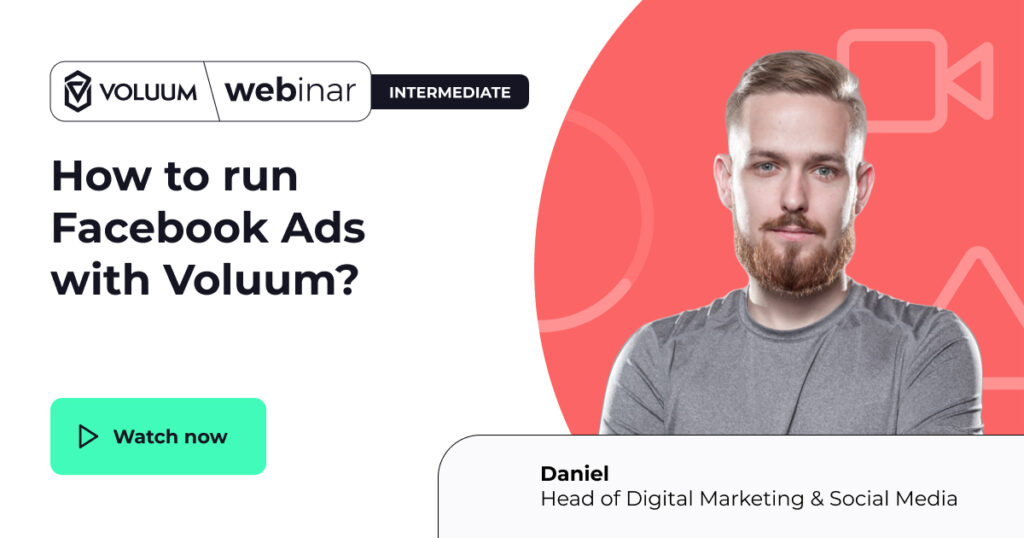

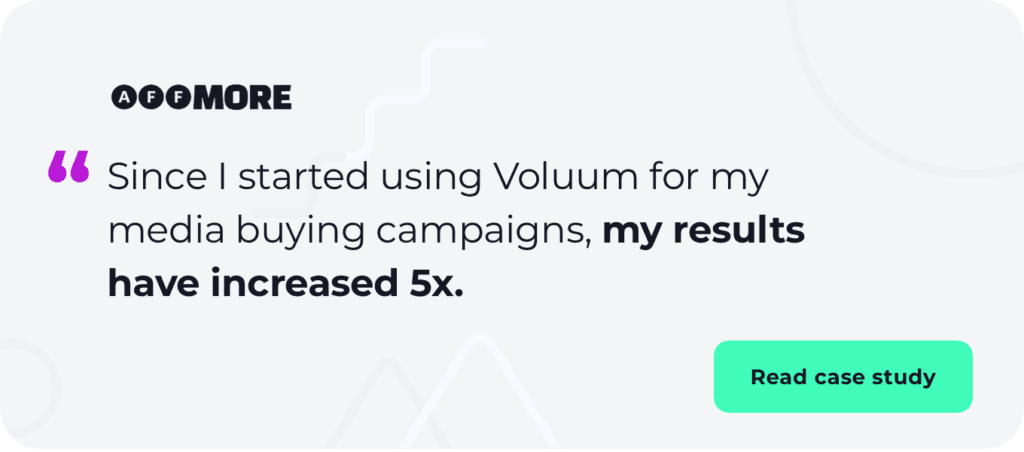
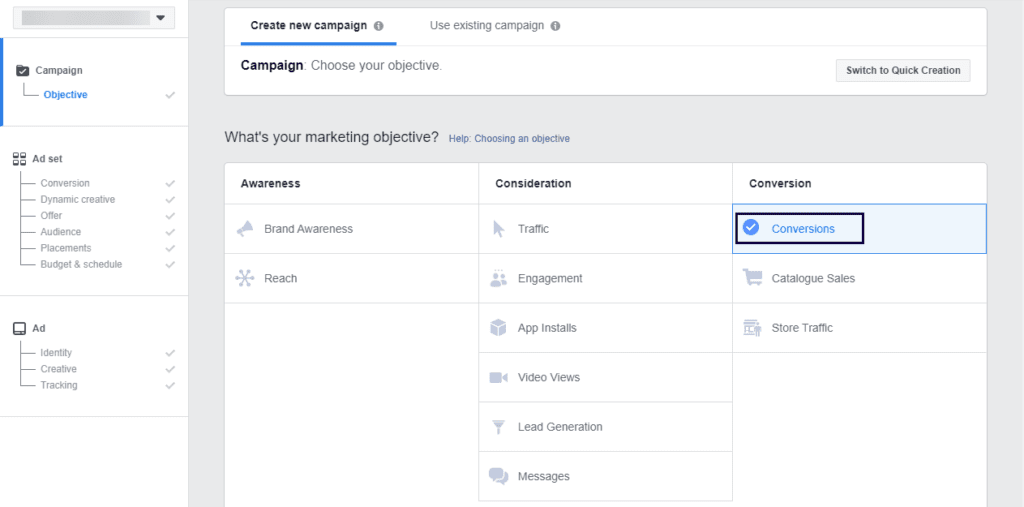
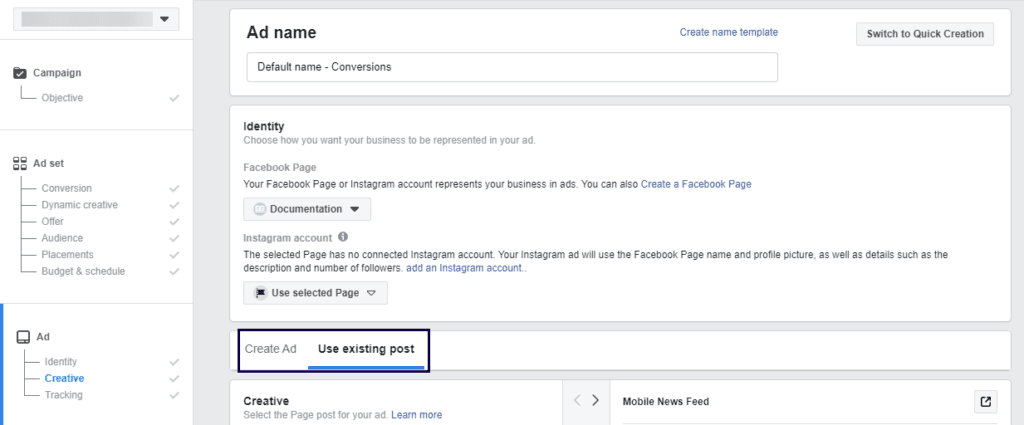
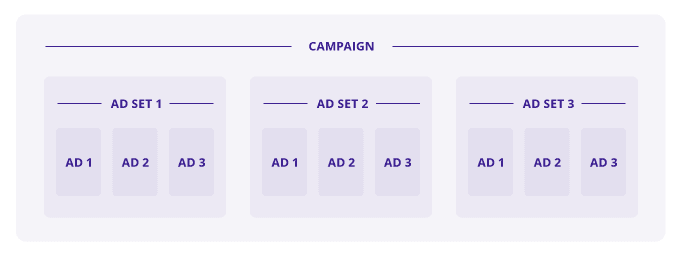


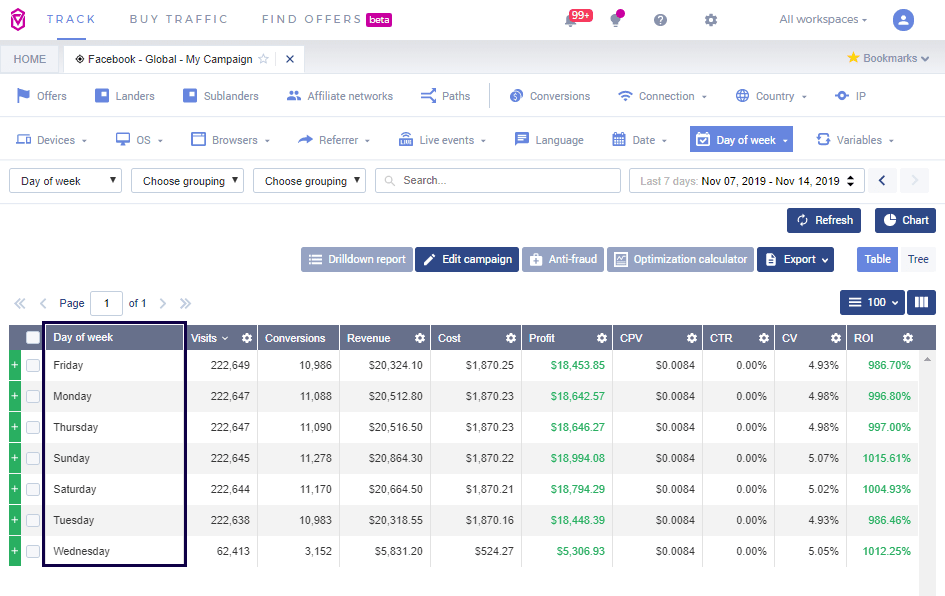



One comment
Thanks for sharing this information to us.